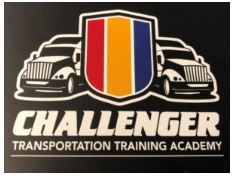TTSAO offers a reality check on virtual training

MISSISSAUGA, Ont. — It’s been nearly two decades since Canadian fleets started using simulators to train truck drivers.
They have evolved over the years and become an integral part of driver training across the country, but industry leaders say simulation-based tools can merely augment traditional training, not replace it.
While they agree simulators are hugely beneficial, just like in the aviation industry, they also acknowledge that “yard time” remains crucial in driver training.
 “Nothing is going to replace the real thing,” said Vickie Devos, CEO and president of iMVR Canada, which provides training through virtual reality (VR) tools.
“Nothing is going to replace the real thing,” said Vickie Devos, CEO and president of iMVR Canada, which provides training through virtual reality (VR) tools.
Devos was speaking at a panel discussion — Technology from a Schools Perspective — at the fifth annual TTSAO conference in Mississauga last week.
Lesley de Repentigny, president and CEO of DriveWise, said simulators are just training tools, and not training solutions.
“I think it’s ridiculous, when people start talking about replacing live facilitation on something that is so soft-skills oriented with online technology and simulators,” she said.
 Steve Newton, director of safety at Challenger Motor Freight, agreed.
Steve Newton, director of safety at Challenger Motor Freight, agreed.
“I don’t personally believe that simulation will ever take over from training. I think it will eventually speed up training, and possibly create a lower cost to the truck time,” Newton said.
Challenger, which last year opened its own driver training academy, has just acquired a multi-screen L3 simulator, he said. The company is now working to incorporate the system into its training programs, Newton added.
He said there are different ways of using the simulation depending on the level of experience of the person being trained.
Some drivers are skeptical about training on a simulator, but Newton reminded the audience that simulators are not going to be 100% real life.
“It is meant to be able to put you into situations that you will never be able to intentionally put yourself into while on the road, and modify behaviors… It’s a tool to learn behaviors.”
Moderator John G. Smith of Newcom Media asked the panelists whether there is really a need to augment the time-tested traditional methods of training.
The answer was “yes”, as simulators help bolster safety and cut costs.
Newton said a major benefit is trainers can replay any scenario multiple times on simulators.
“So, when it actually happens on the road, you pretty much know how they’re going to react,” said the former trucker.
 Another benefit is the standardization of training programs, said Repentigny, whose company has been providing advanced driver learning solutions since 2004.
Another benefit is the standardization of training programs, said Repentigny, whose company has been providing advanced driver learning solutions since 2004.
“All (students) are being exposed to the exact same training experience, they’re not having a variable,” she said.
A report released last March by the U.S. consultancy MarketsandMarkets said the overall global driving simulator markets was growing at a fast pace.
It estimates that the market will be worth US$2.4 billion by 2025, up from $1.7 billion in 2019.
Have your say
This is a moderated forum. Comments will no longer be published unless they are accompanied by a first and last name and a verifiable email address. (Today's Trucking will not publish or share the email address.) Profane language and content deemed to be libelous, racist, or threatening in nature will not be published under any circumstances.
Perhaps more important questions are who ever suggested virtual training would replace hands-on training, and why would anyone listen to such lunacy in the first place?